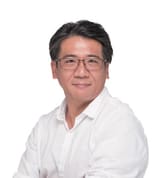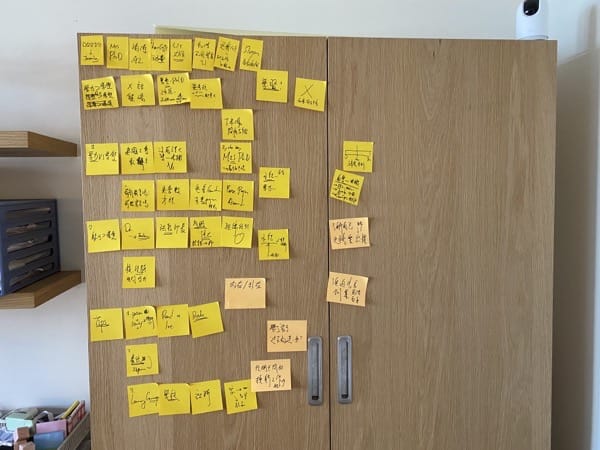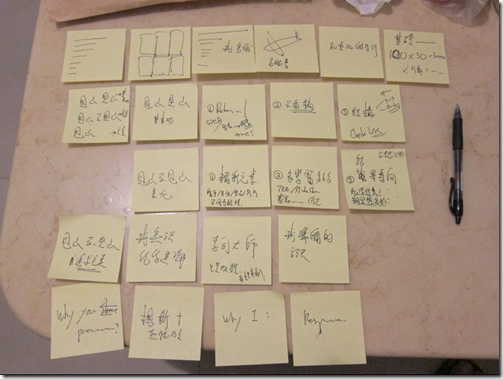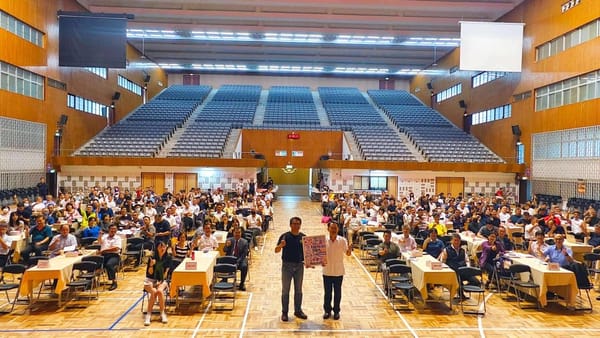Case Study: Medical Law 101 - Gamification in Specialized Course Teaching
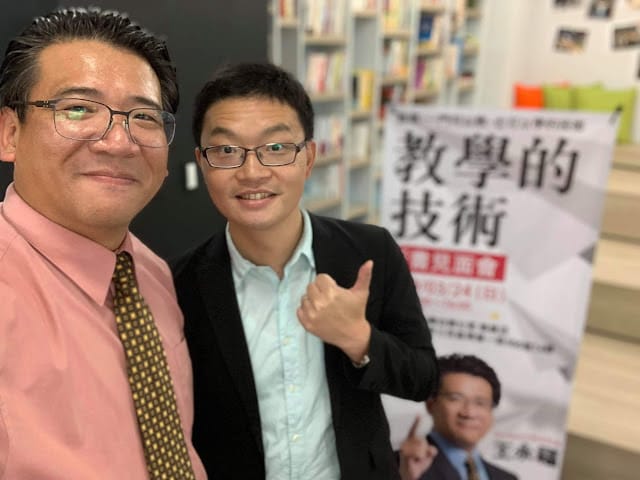
A classroom is filled with medical personnel, attentively listening to a lecture on medical law taking place at the front of the room. Speaking strictly, the definition of "medical routine" alone is highly specialized, let alone delving into the "legal judgment of medical routine". This field straddles both "medical" and "legal" expertise, and only a handful of experts are capable of lucidly discussing its intricacies. One such expert is Dr. Kun-Ren Yang, affectionately known as 'Emergency Big Brother'.
Afternoon class on "Medical Routine and Legal Practice"
Dr. Kun-Ren Yang, an emergency physician by profession, also holds a Master's degree in Law. He is well-versed in medical dispute resolution processes and legal rulings. Not only does he lecture medical colleagues, but he has also led discussions on medical disputes and cases with lawyers, and has published "The 40 Mandatory Medical Lessons Not Taught by Teachers", which delves into real medical cases and court judgments. The audience for this particular day's lecture were medical colleagues from other hospitals. The class took place at 2 p.m., and the topic was "Medical Routine and Legal Practice". In the face of such specialized content (medical expertise + legal expertise = super specialization), specialized students (doctors, nurses, hospital administrators), and challenging time slot (2 p.m. to 4 p.m.)... how do you think the class proceeded? What was the classroom atmosphere like? Was it the teacher explaining the laws segment by segment on the podium while the students nodded off below, or was everyone drowsy and unresponsive?
The actual situation would surpass your imagination! The scene was such that as soon as the teacher asked, "Is this surgical consent form valid?" a bunch of students immediately raised their hands, eager to answer. A while later, everyone, following the teacher's instructions, quickly picked up their phones to search for the "elements" (necessary conditions) of a surgical consent form, trying to be the first to answer the new question that the teacher raised on the slide... Yes, even though they were all scrolling on their phones, what they were scrolling through were legal texts, diligently searching for questions related to medical regulations.
You probably can't imagine that a course on medical and law can be taught in such an engaging and interesting way?
Thinking about Teaching Goals: Memorization or Application?
When initially planning the course, Dr. Kun-Ren spent a lot of time contemplating: "Is the teaching goal of the medical law course to memorize or to apply?" Because if it's just a matter of recounting a bunch of case law and statutes, not everyone might understand, and even if they do understand, they may not necessarily remember, especially when the class is held at 2 p.m., when everyone is at their most tired. If you just read the following laws, how much do you guess the students can remember?
The responsibility for medical actions within the context of routine medical practice, in accordance with the execution of medical duties, entails the obligation to duly observe necessary caution in medical affairs. As explicitly stipulated in Article 82, Section 1 of the Medical Law, the aforementioned "necessary medical attention" is indeed a medical obligation. Whether this obligation is fulfilled should be determined based on the medical standard of care applicable at the time.
Okay, let's take a look at the actual legal judgment above. Even if we break it down with some examples, I bet this medical law stuff would still stump a lot of professionals, let alone medical staff who don't often tangle with the law. After all, you know what they say, "it's like trying to climb a mountain" when facing these specialized legal phrases. It's genuinely tough to grasp in a short time. And we're not even talking about memorizing it yet. Maybe after half an hour of lecture, everyone's drifting off to dreamland.
Okay, let's take a look at the actual legal judgment above. Even if we break it down with some examples, I bet this medical law stuff would still stump a lot of professionals, let alone medical staff who don't often tangle with the law. After all, you know what they say, "it's like trying to climb a mountain" when facing these specialized legal phrases. It's genuinely tough to grasp in a short time. And we're not even talking about memorizing it yet. Maybe after half an hour of lecture, everyone's drifting off to dreamland.
But the scenes medical staff deal with every day might relate to these medical laws, which not only protect patients but also themselves. So, how do we teach this tough yet crucial subject to achieve better learning outcomes?
Dr. Kun-Ren Yang thought of a good idea - before going into the law articles and judgments, let's go back to the start: all legal judgments stem from an "incident." In this incident, the plaintiff and defendant did something, led to some outcomes, and had their own different views before letting the court decide. So, can we simulate the original situation, summarize the whole process, and let everyone make some judgments before comparing them to the legal judgments?
Take the aforementioned judgment for example, if we go back to the original "incident," it would be:
"Patient Xiao Wang was preparing for a ligament reconstruction surgery. Doctor Da Ren Yang explained the surgical risks and precautions, and Xiao Wang signed the surgery and anesthesia consent forms. However, after surgery, Xiao Wang's hand still hurt and couldn't move freely, so he sued, demanding 8 million in compensation from Doctor Da Ren Yang."
After describing the incident, Dr. Kun-Ren Yang would ask the audience: "How would the judge decide in this incident? Would the doctor be ordered to pay 8 million? Or would the hospital compensate for the patient's loss? Or would the patient lose the case, and neither the doctor nor the hospital would have to pay? Please choose one of the three options!"
After the participants made their choice and explained the basis of their judgments, Dr. Kun-Ren Yang would then introduce the actual legal judgment and reasoning for this real case. That's when everyone would have an "Aha!" moment – "So the disclosure and evaluation of the 'surgery consent form,' and the related records, are that important!" Not only did everyone understand the case on the spot, but they were also stunned by the recent case: "So, if we miss some important disclosures, we might accidentally lose a lot of money!" (Case reference: "The 40 Essential Medical Lessons That Teachers Didn't Teach" 1-4)
Creating a "Risk-Free" Learning Environment
Just as the discussion on the last case wrapped up, Dr. Kun-Ren Yang immediately asked the next question: "Patient Mike says he grew up abroad and doesn't understand Chinese. Is the 'surgery consent form' he signed valid? Quick, answers please."
A forest of hands shot up from the audience. From my spot on the sidelines, I rough counted at least 11 eager participants. Dr. Yang first let a nurse on the left speak. But as soon as she finished sharing her opinion, a doctor on the right raised his hand, eager to share a different perspective. Why were they all so eager? Because every opinion — right or wrong — would earn their team at least 1,000 to 3,000 points. And the team with the highest points at the end of the course would receive a signed book from Dr. Yang! Even the second and third place teams would receive small gifts and priority for a group photo. So regardless of the question or whether their answers were correct, everyone was enthusiastically vying to answer. You wouldn't have guessed it was the afternoon, typically the time when students are most tired and drowsy.
Dr. Yang knew that students aren't usually unwilling to participate. But long-held habits and experiences make them afraid of being embarrassed if they say something wrong, or of getting the cold shoulder from their peers if their opinion differs from the teacher's. This leads to many students preferring to stay silent rather than express their thoughts and opinions in class.
"So, we need to address this mindset from the start," Dr. Yang thought. So he designed a super easy multiple-choice question to warm everyone up: "What's the name of today's lecturer: Li Li-Ren / Li Da-Ren / Yang Kun-Ren?" After everyone chose their answer to this lighthearted question (Dr. Yang humorously called this the "idiot Q&A"), every team immediately got 1,000 points!
This was a great start. From then on, everyone knew that whether they were right or wrong, they would still receive different scores. Those who answered well, of course, scored higher; those who were wrong or less accurate still got a base score. "There are no wrong answers in today's classroom; every answer is valuable," Dr. Yang shared with me. He believes in "rewarding participation, not correctness," thereby creating a "risk-free" learning environment. Everyone can freely engage and actively express their opinions, without worrying about criticism or negative feedback.
Teaching Methods and Gamification Working Together
Throughout the teaching process, Dr. Kun-Ren Yang designed various teaching methods to stimulate thinking and participation, such as:
- Is it okay to ask the patient to sign a waiver for general anesthesia? (Multiple choice question)
- Who can sign a consent form? Patient/Patient's family member/70-year-old elderly person/Patient's friend? (Multiple choice question)
- A patient walks into the clinic, complains of chest discomfort and is a bit out of breath. As a doctor, what tests would you arrange? Using the S.O.A.P. (Symptoms, Objective findings, Assessment, Plan) method, write down the patient's medical record on a poster. (Group discussion)
- Suppose you are a member of a medical dispute review committee, please review the patient's medical record just written, and see what is missing... please point out! (Simulation exercise— "Everyone Spot the Mistakes")
All of the above are teaching content designed from educational objectives and applied with various teaching methods. The knowledge imparted is still very professional, but the process involves not just lecturing, but inviting everyone to participate in interactive discussions first, then revealing the answers and supplementing relevant legal provisions by the teacher.
Of course, since all these teaching methods require active participation from the learners, not passive participation assigned by the teacher, Dr. Yang also applied a lot of gamified teaching methods, such as:
Grouping:
From the beginning, he had everyone form groups of 3 to 5 people, assigning a group leader and, if time allowed, conducting a simple ice-breaking activity. This helped everyone form a learning team, laying the foundation for gamified learning.
PBL Elements:
Gamification elements—points, rewards, leaderboards—are also methods Dr. Yang is very familiar with. Generally, chips are used for scoring in small classrooms, while larger groups record their scores on paper. Interestingly, Dr. Yang prepares scorecards listing all the stages of the day's course, including the points for correct answers, similar to a game level progression. The scorecard can also be used as a leaderboard; a quick tally during the course reveals the points distribution.
Rewards:
Dr. Yang has tried many different reward systems, physical ones such as chocolates, snacks, or books, and has even compiled articles he's published on his blog, printing them out for the audience. After his book "40 Essential Medical Courses Not Taught by Teachers" was published, he started giving out signed copies! Both relevant to the course content and very practical, healthcare professionals all wanted one.
Other:
For example, as mentioned earlier, immediate reinforcement through points for correct answers, a risk-free environment for wrong answers, challenges that progress from simple to difficult, clear and fair game rules—Dr. Yang applies all these important principles of gamified teaching just right.
All of this is to achieve his desired educational objectives.
"Even though the total amount of content may be reduced by using interactive teaching and gamification, the learners' absorption will be much better! It's better than delivering a two-hour lecture that the students don't take in at all. As long as they grasp the key points, know how to apply them when they encounter situations in the future, and even become aware of which medical actions may not comply with regulations... that's what I really want the students to learn!" Dr. Yang said.
Not a Genius but a Hard Worker
Having had multiple learning experiences and even speaking opportunities with Dr. Kun-Ren Yang, as well as attending his courses as a participant and serving as his teaching coach, I am more aware than others that Dr. Yang's excellent teaching is not the display of a natural-born genius, but the result of constant hard work.
"Bad articulation, too many verbal errors, and no practice at all." This was the feedback given by students after Dr. Yang's first public lecture. Receiving such feedback was a bit disheartening for him, but he said, "All I can do is to keep practicing and accumulate experience from each and every opportunity I have to teach. If there is no opportunity, I'll create one."
The original hard-working teacher has thus come all the way to becoming a brilliant educator in everyone's eyes. Whether it's teaching methods, gamification operation, on-site interaction, teaching effectiveness, or even subtle adjustments to music or changes to competitions... "Big Brother Kun-Ren from Emergency" has successfully made the arcane medical law a part of everyone's daily life, something everyone can understand and take with them.
Teachers often ask me: "My course is difficult and very specialized, is it suitable for gamified teaching?" If you're facing a similar dilemma, you might want to ask yourself: "Is my course more specialized than medicine or more complicated than law?"
Of course, the gamified teaching methods Dr. Yang demonstrated during the process, as well as the gamified teaching environment and mechanisms he deliberately created, will be explained in detail in later chapters.
(The above article is translated from the Chinese version of the book "Techniques of Gamification in Teaching".)
